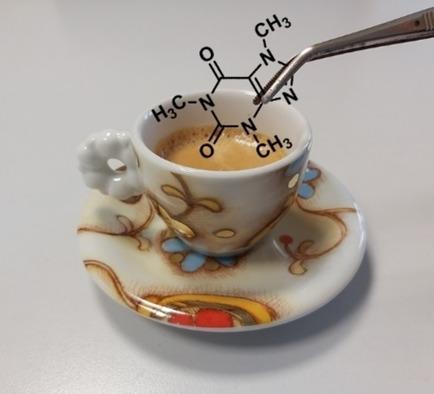当前位置:
X-MOL 学术
›
ChemPlusChem
›
论文详情
Our official English website, www.x-mol.net, welcomes your
feedback! (Note: you will need to create a separate account there.)
Effective Recognition of Caffeine by Diaminocarbazolic Receptors.
ChemPlusChem ( IF 3.0 ) Pub Date : 2020-03-19 , DOI: 10.1002/cplu.202000114 Oscar Francesconi 1 , Andrea Ienco 2 , Cristina Nativi 1 , Stefano Roelens 1
ChemPlusChem ( IF 3.0 ) Pub Date : 2020-03-19 , DOI: 10.1002/cplu.202000114 Oscar Francesconi 1 , Andrea Ienco 2 , Cristina Nativi 1 , Stefano Roelens 1
Affiliation

|
Caffeine is a competitive inhibitor of adenosine receptors and possesses wide pharmacological activity. Artificial receptors recognizing caffeine potentially have a wide range of biomedical and industrial applications. Herein, we describe two structurally related and readily available artificial receptors: 1) a macrocyclic receptor, which binds caffeine with the unprecedented affinity of 9.3 μM, though with poor selectivity; and 2) a tweezers‐like structure, showing an affinity of 26 μM and a 4.5‐fold and 6‐fold selectivity compared to theophylline and theobromine, respectively. Binding affinities were measured by 1H NMR titrations and were confirmed by isothermal titration calorimetry. The X‐ray structure of the complex between caffeine and the acyclic receptor revealed the origin of the recognition, explained the selectivity, and shed light on the role of hydrogen bonding and CH−π/π–π interactions.
中文翻译:

二氨基咔唑受体对咖啡因的有效识别。
咖啡因是腺苷受体的竞争性抑制剂,具有广泛的药理活性。识别咖啡因的人工受体潜在地具有广泛的生物医学和工业应用。本文中,我们描述了两种在结构上相关且易于获得的人工受体:1)大环受体,它以9.3μM的前所未有的亲和力结合咖啡因,但选择性较差;2)镊子状结构,与茶碱和可可碱相比,分别具有26μM的亲和力和4.5倍和6倍的选择性。结合亲和力用1来衡量1 H NMR滴定和通过等温滴定量热法确认。咖啡因和无环受体之间的复合物的X射线结构揭示了识别的起源,解释了选择性,并阐明了氢键和CH-π/π-π相互作用的作用。
更新日期:2020-03-19
中文翻译:

二氨基咔唑受体对咖啡因的有效识别。
咖啡因是腺苷受体的竞争性抑制剂,具有广泛的药理活性。识别咖啡因的人工受体潜在地具有广泛的生物医学和工业应用。本文中,我们描述了两种在结构上相关且易于获得的人工受体:1)大环受体,它以9.3μM的前所未有的亲和力结合咖啡因,但选择性较差;2)镊子状结构,与茶碱和可可碱相比,分别具有26μM的亲和力和4.5倍和6倍的选择性。结合亲和力用1来衡量1 H NMR滴定和通过等温滴定量热法确认。咖啡因和无环受体之间的复合物的X射线结构揭示了识别的起源,解释了选择性,并阐明了氢键和CH-π/π-π相互作用的作用。











































 京公网安备 11010802027423号
京公网安备 11010802027423号